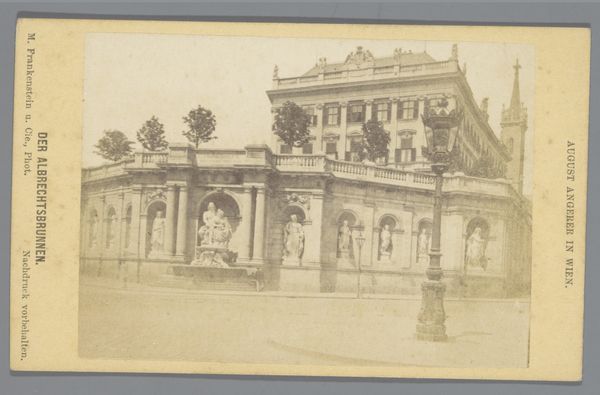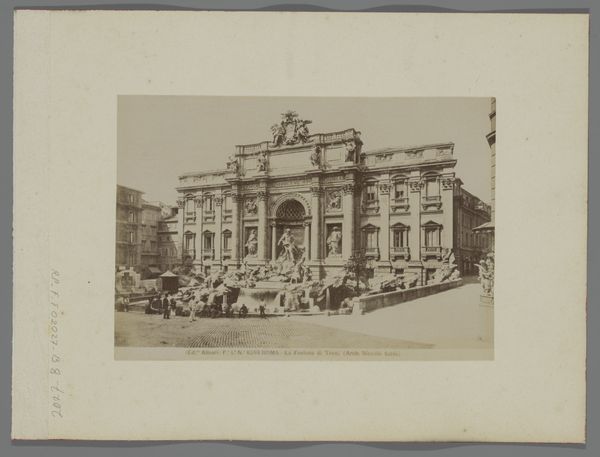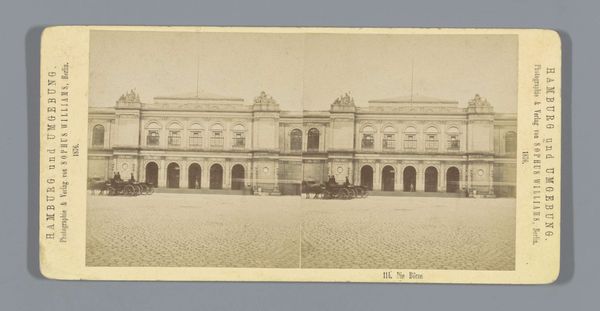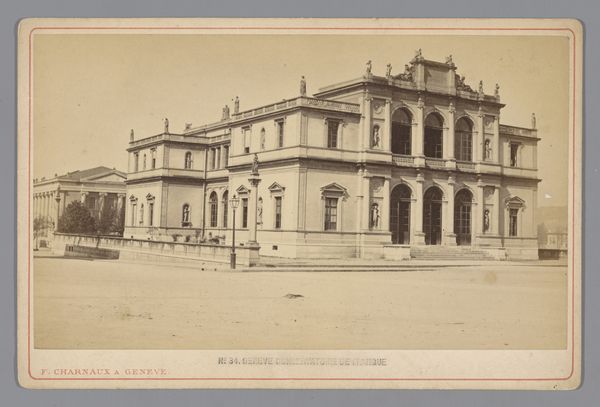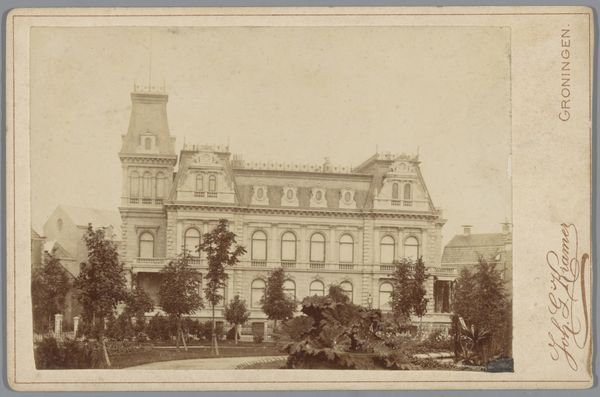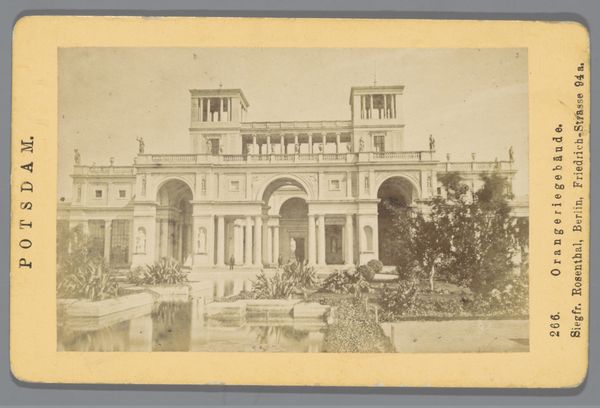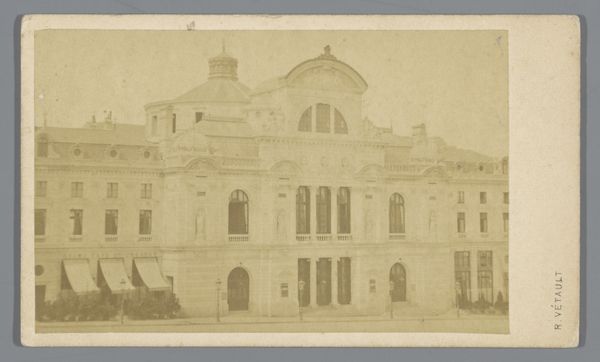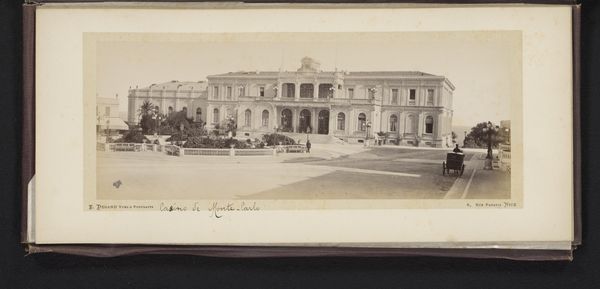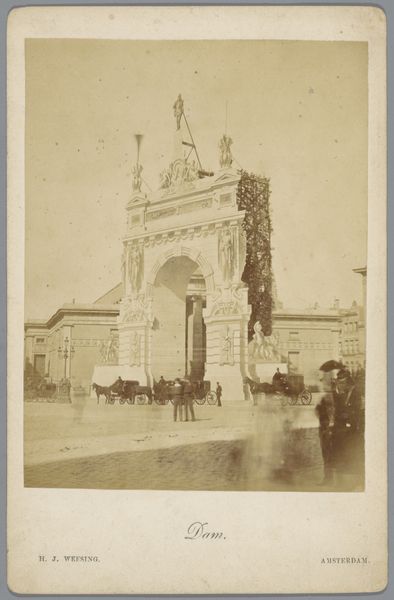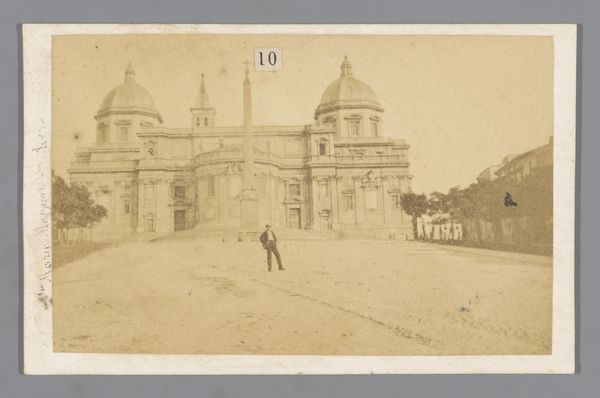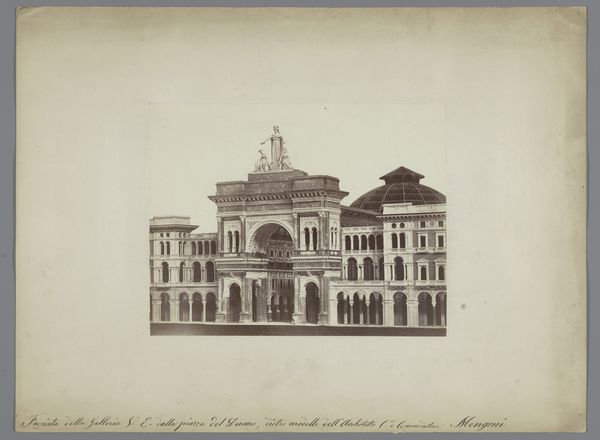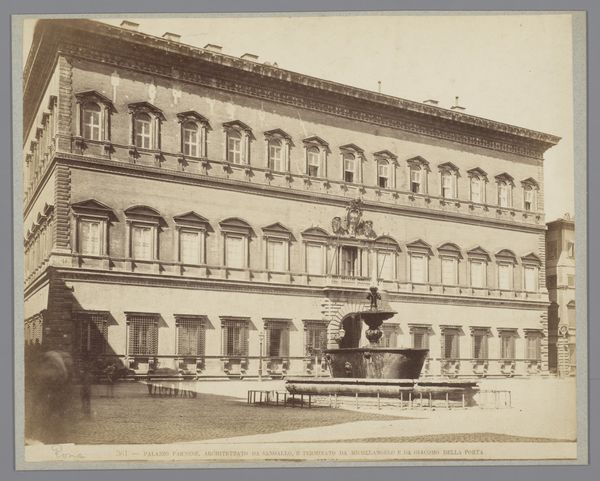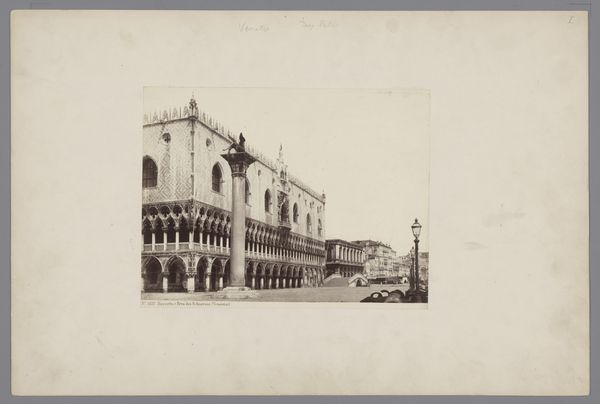
Dimensions: height 107 mm, width 166 mm
Copyright: Rijks Museum: Open Domain
Curator: Here we have Andries Jager's "View of the Panorama Building in Amsterdam," taken sometime between 1860 and 1890. It's an albumen print, held in the Rijksmuseum collection. Editor: My initial feeling is one of stillness and quiet grandeur. The soft sepia tones create an atmosphere that feels both nostalgic and imposing. It makes you think about labour too; what it was like working as the vendor or as a passer-by. Curator: Absolutely. What I find compelling is how this photograph speaks to the shifting landscape of Amsterdam at the time. The Panorama building itself, with its promise of immersive entertainment, becomes a focal point. Jager subtly acknowledges modernity by juxtaposing it with the everyday lives of ordinary people. How did access to modernity function at that time? Editor: For me, the presence of the street vendor in the foreground underscores the materiality of the city. Notice the wooden cart, the figure's sturdy clothes. This vendor and other workers must have supported the growing infrastructure that supported leisure destinations. Their labour powered the panoramas that audiences could come to. It highlights a complex system of exchange and labour needed for art and culture to grow. Curator: Exactly! The albumen print itself, with its chemical processes and skilled labor in the darkroom, echoes this sentiment. The photographer carefully considered his materials; light, and composition in conveying a sense of time and place and its inequalities. I think you’re also right in noticing how gender is relevant here too; images of workers are largely men at the time. Editor: The choice of albumen print adds another layer. This method would have been quite labour-intensive, with egg whites employed to bind the image to the paper. The vendor's efforts mirrored that effort too, which connects art production with other material realities. I suppose, if one wants to go all the way down the rabbit hole, then even this recording and dissemination process is reflective of labor. Curator: Looking at the composition as a cultural document lets us look closely at structures that existed then but persist to the current day. Considering the vendor pushing his cart alongside a modern building forces you to wonder about disparities and opportunities, then and now. Editor: It certainly complicates how one approaches "landscape," shifting it away from an elite perspective, but rooting it in everyday actions and labour. Seeing the image with its sepia toning now might not carry that kind of charge now, but certainly, in its moment, it was challenging the form and function of documentary imaging. Curator: Jager offers us a glimpse into a moment of transformation, a time when industry and art converged. There's an enduring appeal in these early photographs because of their historical echoes of societal shifts and continuities. Editor: I'll never look at it as 'just a photo' again! It shows just how materials carry historical narratives that are socially revealing and full of human energy and labor.
Comments
No comments
Be the first to comment and join the conversation on the ultimate creative platform.
